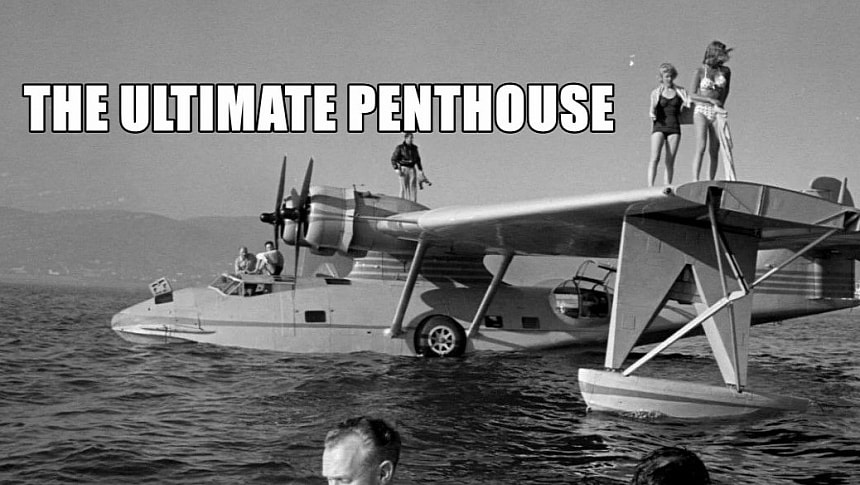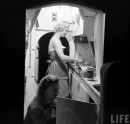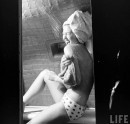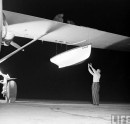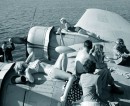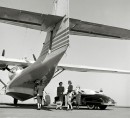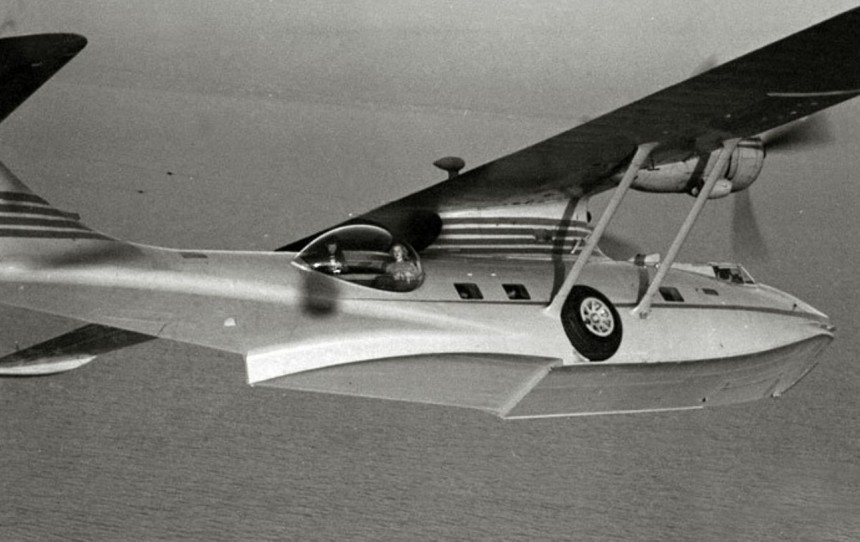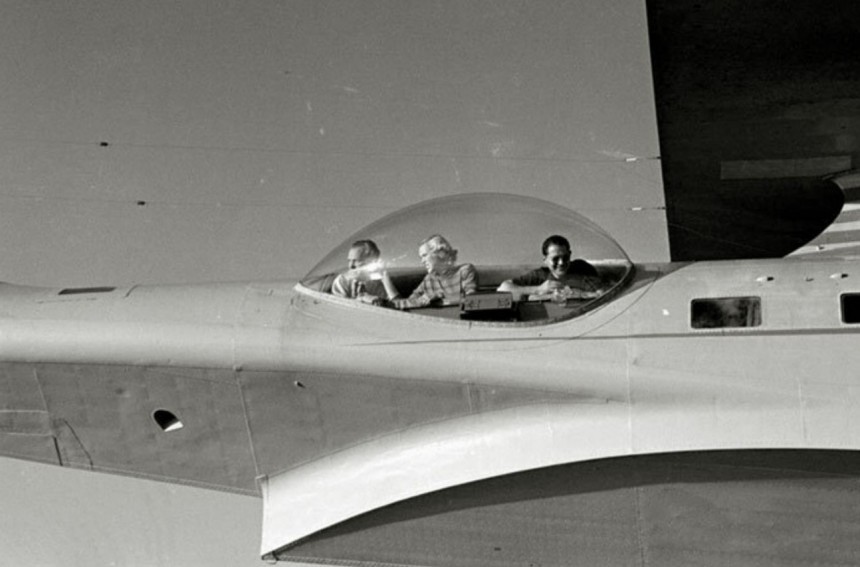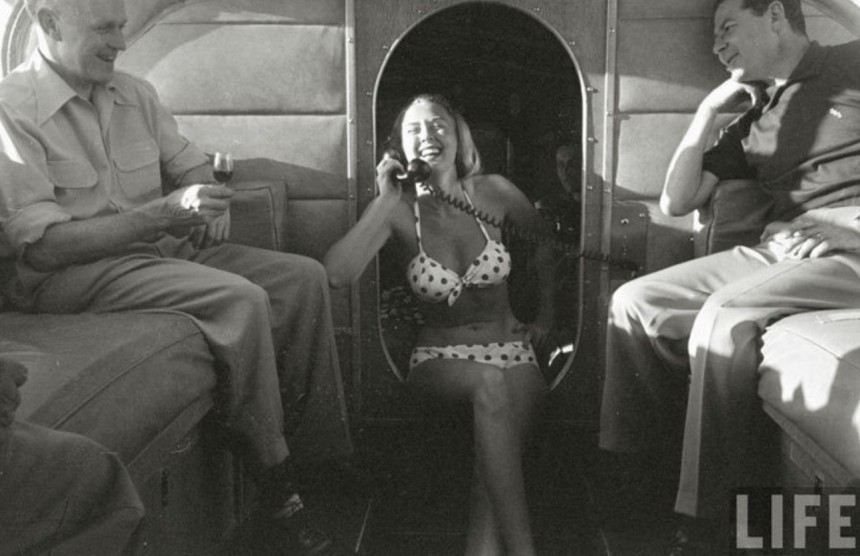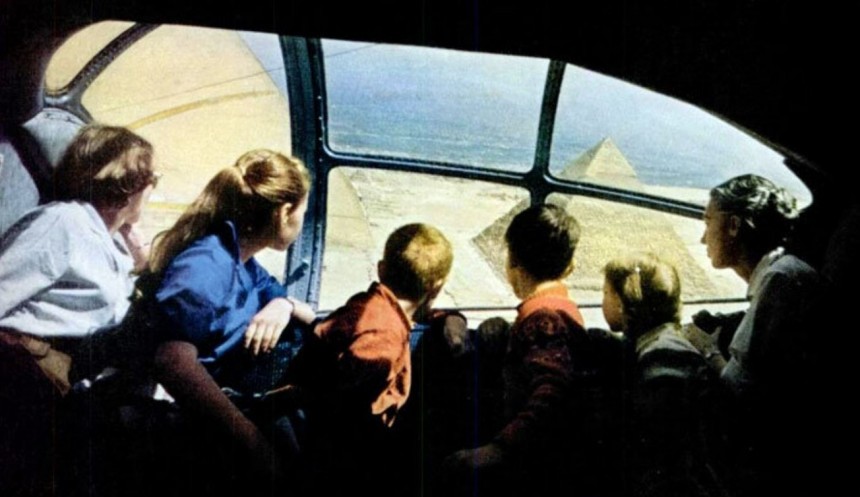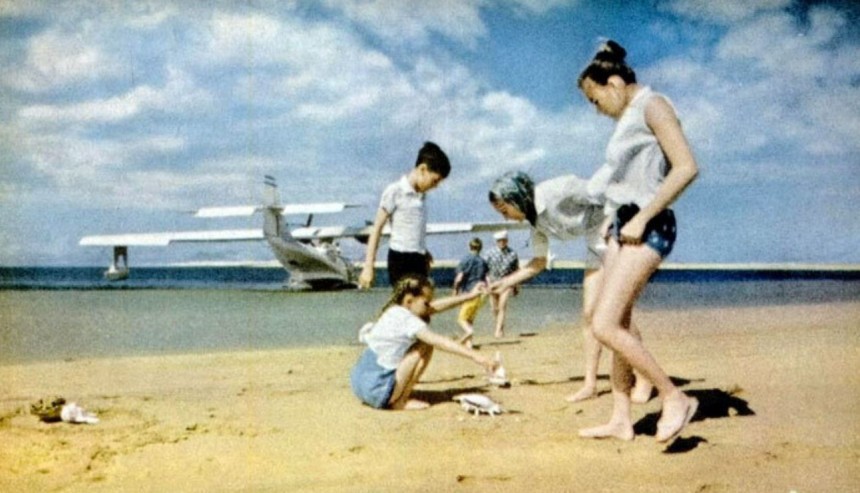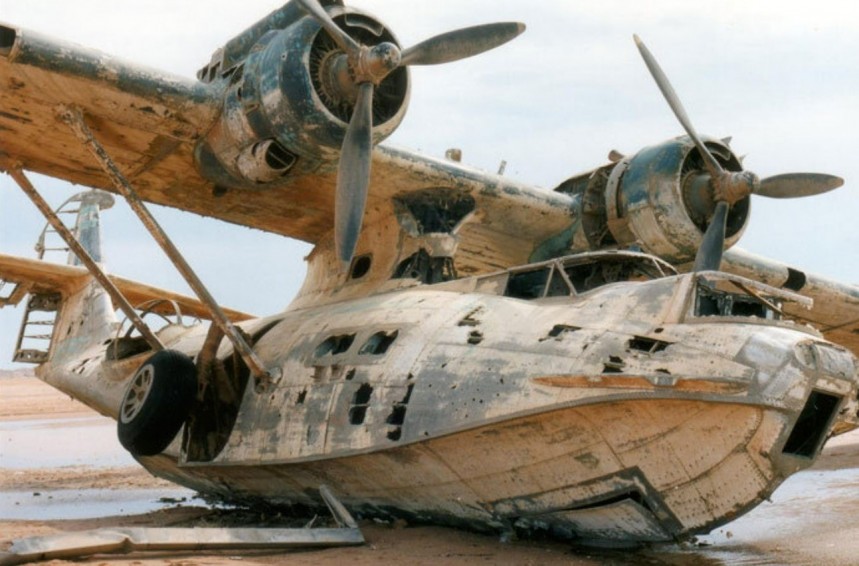The optimism of the post-WWII era remains unparalleled, and justifiably so. One dark, painful episode had just wrapped, and humanity was itching to embark on new adventures, to live life to its fullest – whether in a literal sense or just by use of the imagination, in the case of those who couldn't afford the real thing.
That's the context in which the Landseaire was born, a land-sea-and-air recreational vehicle unlike any other. The Landseaire was designed as a step up from private or corporate jets in the form of an all-in-one package deal. It wasn't as much a means to travel from Point A to Point B, but a destination in itself since it could land anywhere without an issue – be it on water or on land.
The Landseaire was the ultimate penthouse because, unlike a regular penthouse, this one could fly, float, and land wherever its residents wanted. That's because, unlike most concepts that have made their way into the pages of history, the Landseaire was deeply rooted in the past it was trying to make millionaires forget, being based on a surplus of Consolidated PBY Catalina military aircraft.
The Consolidated Model 28, or the PBY Catalina, was designed and used extensively in the 1930s and 1940s, with applicability that ranged from patrol bomber to rescue missions. It was a twin-engined amphibious military aircraft that boasted an impressive range and excellent maneuverability, all of which translated into high production numbers and widespread use in the U.S. military.
With WWII over, there was a surplus of Catalinas that made their way to the private sector. It was the perfect opportunity for aerospace engineer (and close Howard Hughes collaborator and friend) Glenn Odekirk to bring his super-fancy dream into reality.
Through his Southern California Air Corp., Odekirk carried out the first of a long line of Catalina conversions, which eventually launched the term Landseaire for any conversion of the kind. In July 1953, with help from photographer Loomis Dean from LIFE Magazine, Odekirk's family, and a couple of up-and-coming Hollywood starlets, the Landseaire got an extensive and flattering editorial in the magazine.
"Airborne Yachts – Luxury Conversions of Wartime Catalinas," the accompanying piece, heralded in a new era of luxury transport, praising Odekirk for having come up with an idea that stood to write history. It was a fluff piece, alright, but it offered a unique look at a "camper" of the kind the world hadn't seen: more than a private jet, a yacht, or an RV, it was a full-time home with incredible capabilities.
The wartime Catalina had been completely transformed for that. It was now clad in fiberglass, thick carpeting, and cushioned walls, which served to render it slightly less noisy in the air. It now carried dinghies under each wing where it once carried bombs and torpedoes, and the former gun ports had been turned into a spectacular lounge slash bedroom with a one-piece free-blown Lucite dome, and an opening entryway.
The interior layout now featured seating and dining areas that could convert at night into three double beds and two singles, there was a galley with all the modern equipment of a kitchen on solid land, and a bathroom with shower and not one but two water closets. As the LIFE photospread showed, you could cook entire meals in the air – and considering this was the '50s, it was probably not a question of "could" but "must" for female passengers.
A three-plate range, fridge, sink with hot and cold running water, and even a freezer were available. There was a full bar near the observatory, always stocked. There was a small shower in the bathroom, a flushing toilet to use while on water, and a chemical one for air transport.
The Landseaire had air-conditioning with vents going to each bed, which was probably a good idea given the large amount of glazing and the fact that smoking onboard was allowed. It also had AM FM radio, a television set, and an intercom system that allowed instant contact with anyone in the world, including boats at sea and landline telephones back home.
The fluff piece also offered an estimate of costs and pricing. The Lucite dome on one ex-gun port alone was more than $2,000. Any millionaire looking for their own Landseaire would have to part with $265,000 to start with, so about $3.2 million in today's money, adjusted for inflation.
No word on how many Landseaires Odekirk built or sold before his company went bust just a few years later. The unit that earned him international media attention was sold to a Brazilian businessman and crashed just a short while later, only weeks after the LIFE editorial made it to print.
He bought three Catalinas to begin with, hiring interior designer George Erb of the Barker Brothers for the conversion. Each of these Lanseaires had a theme, and Kendall's plan was to buy at least 13 more Catalinas at a later point to start his own fleet of flying yachts slash vacation homes.
His Landseaire was even more luxurious than the original, with enhanced sleeping capabilities (up to 14 people could sleep inside) and even a spacious formal dining room that could seat the entire party. Before launching the new business, though, Kendall boarded his family, his secretary and her son, and another LIFE photographer for a round-the-world trip that would double as the ideal family vacation and advertorial opportunity.
The start of the journey was incredibly promising. The Landseaire made it into film, being featured in Richard Attenborough's SOS Pacific, spent some time outside London for repairs, and then made its way to Saudi Arabia. It was here that it was photographed extensively for a LIFE spread, ironically just hours before it was attacked by Bedouin tribesmen from the army acting on the assumption that it was an enemy airplane carrying commando troops.
According to both Kendall and the LIFE photographer, some 4,000 rounds were shot at the Landseaire during a 40-minute attack, of which 300 hit the aircraft, and one hit Kendall himself. He was eventually able to crawl into the cockpit and start the engines, but flying out of the danger zone was no longer possible. They boarded the dinghies and tried to make their way to shore, to safety.
The Kendalls ended up being taken hostages but were freed when their identity was confirmed. The U.S. government helped to bring them back home, but the Landseaire remained there on the beach, where it is still today. In 1995, another photographer, Ken Stanford, visited the wreck and unwillingly turned it into a popular tourist spot when his photos went viral.
Despite the so-called "Catalina curse," the appeal of the Landseaire held strong through the '80s. Even today, there's occasional talk of such an aircraft, though it's scaled down in terms of luxury finishes and amenities onboard.
At least one original Landseaire, instantly recognizable for the one-piece Lucite dome in the observatory, and one original Kendall conversion are still around: one in the Pima Air and Space Museum in Tucson, AZ, and the other in the San Diego Air & Space Museum in California. Both have been repainted and feature modified interiors, but they can still offer a good appreciation of the bold, outrageous, and super-luxurious dream that was the flying, floating vacation home that was the Landseaire.
The Landseaire was the ultimate penthouse because, unlike a regular penthouse, this one could fly, float, and land wherever its residents wanted. That's because, unlike most concepts that have made their way into the pages of history, the Landseaire was deeply rooted in the past it was trying to make millionaires forget, being based on a surplus of Consolidated PBY Catalina military aircraft.
The Consolidated Model 28, or the PBY Catalina, was designed and used extensively in the 1930s and 1940s, with applicability that ranged from patrol bomber to rescue missions. It was a twin-engined amphibious military aircraft that boasted an impressive range and excellent maneuverability, all of which translated into high production numbers and widespread use in the U.S. military.
Glenn Odekirk's "aerial luxury yacht"
That dream was of an "aerial luxury yacht" that could land anywhere, carry an entire family in extremely fancy and modern conditions, and provide the feeling of a cruise liner onboard, being self-sufficient and super comfortable. Odekirk called it the Landseaire, a PBY Catalina conversion that was meant to be a millionaire's dream come true.Through his Southern California Air Corp., Odekirk carried out the first of a long line of Catalina conversions, which eventually launched the term Landseaire for any conversion of the kind. In July 1953, with help from photographer Loomis Dean from LIFE Magazine, Odekirk's family, and a couple of up-and-coming Hollywood starlets, the Landseaire got an extensive and flattering editorial in the magazine.
The wartime Catalina had been completely transformed for that. It was now clad in fiberglass, thick carpeting, and cushioned walls, which served to render it slightly less noisy in the air. It now carried dinghies under each wing where it once carried bombs and torpedoes, and the former gun ports had been turned into a spectacular lounge slash bedroom with a one-piece free-blown Lucite dome, and an opening entryway.
The interior layout now featured seating and dining areas that could convert at night into three double beds and two singles, there was a galley with all the modern equipment of a kitchen on solid land, and a bathroom with shower and not one but two water closets. As the LIFE photospread showed, you could cook entire meals in the air – and considering this was the '50s, it was probably not a question of "could" but "must" for female passengers.
The Landseaire had air-conditioning with vents going to each bed, which was probably a good idea given the large amount of glazing and the fact that smoking onboard was allowed. It also had AM FM radio, a television set, and an intercom system that allowed instant contact with anyone in the world, including boats at sea and landline telephones back home.
The fluff piece also offered an estimate of costs and pricing. The Lucite dome on one ex-gun port alone was more than $2,000. Any millionaire looking for their own Landseaire would have to part with $265,000 to start with, so about $3.2 million in today's money, adjusted for inflation.
Kendall's Landseaire and the "Catalina curse"
At that point, the Landseaire appeal had already taken root. Later that same decade, businessman Thomas W. Kendall, who'd made his fortune in the AC business, decided to launch a new venture for gentlemen like himself, i.e., family men with millions to spare, looking for novel ways to vacation.He bought three Catalinas to begin with, hiring interior designer George Erb of the Barker Brothers for the conversion. Each of these Lanseaires had a theme, and Kendall's plan was to buy at least 13 more Catalinas at a later point to start his own fleet of flying yachts slash vacation homes.
The start of the journey was incredibly promising. The Landseaire made it into film, being featured in Richard Attenborough's SOS Pacific, spent some time outside London for repairs, and then made its way to Saudi Arabia. It was here that it was photographed extensively for a LIFE spread, ironically just hours before it was attacked by Bedouin tribesmen from the army acting on the assumption that it was an enemy airplane carrying commando troops.
According to both Kendall and the LIFE photographer, some 4,000 rounds were shot at the Landseaire during a 40-minute attack, of which 300 hit the aircraft, and one hit Kendall himself. He was eventually able to crawl into the cockpit and start the engines, but flying out of the danger zone was no longer possible. They boarded the dinghies and tried to make their way to shore, to safety.
Despite the so-called "Catalina curse," the appeal of the Landseaire held strong through the '80s. Even today, there's occasional talk of such an aircraft, though it's scaled down in terms of luxury finishes and amenities onboard.
At least one original Landseaire, instantly recognizable for the one-piece Lucite dome in the observatory, and one original Kendall conversion are still around: one in the Pima Air and Space Museum in Tucson, AZ, and the other in the San Diego Air & Space Museum in California. Both have been repainted and feature modified interiors, but they can still offer a good appreciation of the bold, outrageous, and super-luxurious dream that was the flying, floating vacation home that was the Landseaire.
